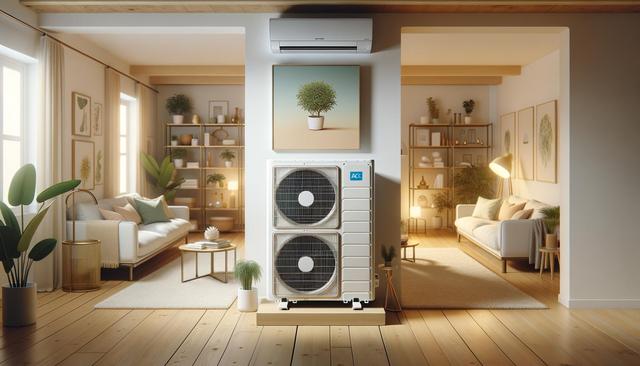What Are Mini Splits and How Do They Work?
Mini splits, also known as ductless mini-split systems, are heating and cooling solutions that operate without the need for extensive ductwork. These systems consist of two main components: an outdoor compressor/condenser unit and one or more indoor air-handling units. The two parts are connected by a conduit that houses the power cable, refrigerant tubing, suction tubing, and a condensate drain. This setup allows mini splits to deliver climate control directly to specific zones.
Unlike traditional central HVAC systems, mini splits enable homeowners to control the temperature of individual rooms independently. This zoning capability not only enhances personal comfort but also improves energy efficiency by avoiding the need to heat or cool unused spaces. Mini splits are particularly useful in homes without existing ductwork, such as older buildings or new additions where installing ducts would be costly or impractical.
Benefits of Using Mini Splits in Residential Spaces
Mini splits offer a range of benefits that make them a popular choice for homeowners seeking efficient climate control. One of the most appreciated advantages is their energy efficiency. Since they allow for targeted heating and cooling, mini splits help reduce energy waste and lower utility bills.
Other notable benefits include:
- Easy installation with minimal disruption to existing structures
- Quiet operation compared to traditional systems
- Remote control features and smart thermostats for convenience
- Improved indoor air quality through advanced filtration systems
These features make mini splits suitable for a variety of applications, including bedrooms, home offices, garages, and even basements. Their compact size and unobtrusive design also allow them to blend well with most interior styles.
Considerations Before Installing Mini Splits
While mini splits offer many advantages, there are important factors to consider before installation. First, it’s essential to evaluate the size and layout of the area where the system will be used. Proper sizing is critical—an undersized unit may struggle to maintain comfort, while an oversized one can lead to short cycling and increased wear.
Other key considerations include:
- Electrical requirements and compatibility
- Placement of indoor units for optimal airflow
- Access for routine maintenance and filter cleaning
- Local climate conditions and system performance ratings
Consulting with a qualified HVAC professional can help ensure that the system meets your specific needs and is installed according to manufacturer guidelines and local building codes.
Maintenance and Longevity of Mini Splits
Like any HVAC system, mini splits require regular maintenance to operate efficiently and last as long as possible. Routine tasks include cleaning or replacing filters, checking refrigerant levels, and inspecting electrical components. Most manufacturers recommend maintenance checks at least once a year, though more frequent attention may be necessary in dusty or high-use environments.
With proper care, mini splits can offer a service life of 10 to 20 years. To maximize their longevity, users should:
- Keep the outdoor unit free of debris and obstructions
- Schedule annual professional inspections
- Use the system within recommended temperature ranges
- Address any unusual noises or performance issues promptly
Regular upkeep not only extends the life of the system but also helps maintain energy efficiency and indoor air quality over time.
When Mini Splits Make the Most Sense
Mini splits are especially practical in certain scenarios. For example, they are ideal for homes that lack ductwork, such as historic buildings or converted attics. They also work well in newly added spaces like sunrooms or guest suites, where extending existing HVAC systems might be costly or inefficient.
Additionally, mini splits are a smart solution for homeowners who want more control over their indoor climate. By allowing room-by-room temperature customization, they cater to individual preferences and reduce energy waste. In multi-story houses or homes with varying sun exposure, mini splits can be used to balance comfort levels throughout the space.
In summary, mini splits make sense when:
- Installing ductwork is not feasible
- Energy efficiency and zone control are priorities
- A quiet, low-profile system is desired
- Supplemental heating or cooling is needed in specific areas







